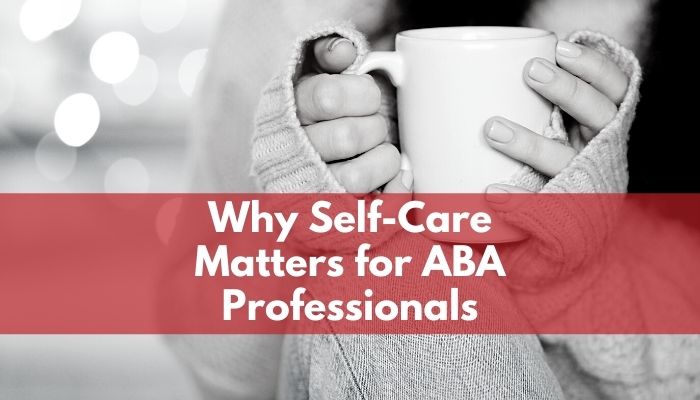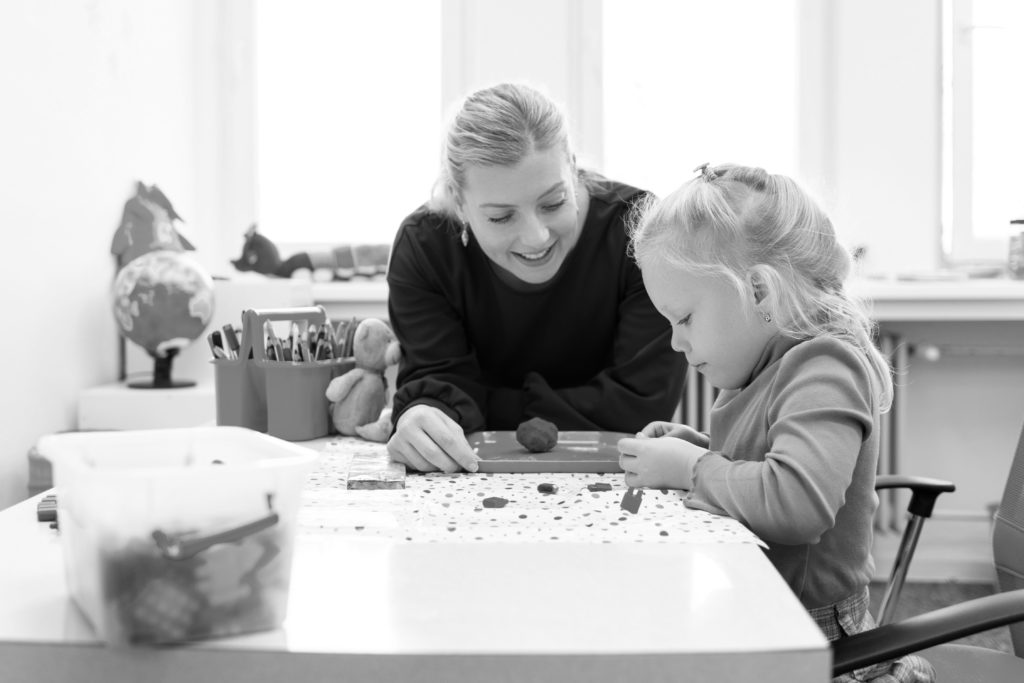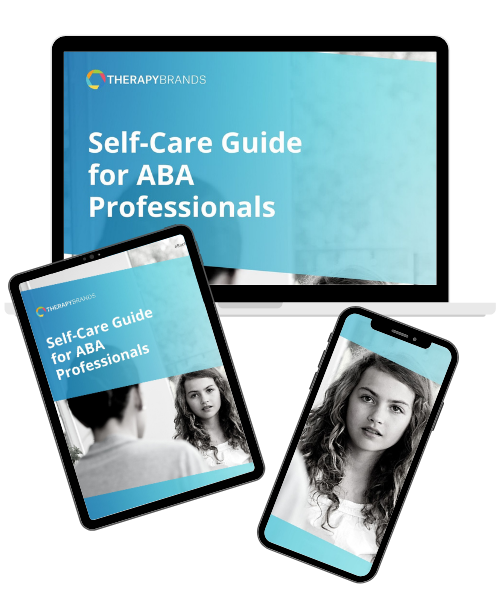
The work of an ABA practitioner involves physically and emotionally challenging situations such as management of extreme or dangerous maladaptive behavior, exposure to unique family dynamics, working in highly stressful environments, tedious and time-consuming documentation, and the need to meet the increasing demand of individuals requiring ABA services (Stillman, 2017). Mills and Rose (2011) identified an association between exposure to problem behavior and caregiver burnout. This same trend was noted in “other clinical experiences as well, where practitioners who are exposed to high-need care for individuals may experience compassion fatigue or burnout” (Stillman 2017).
Considering the stressors associated with being an ABA practitioner, coupled with the demands of everyday life, practitioners are in an extremely vulnerable position.
These factors alone can contribute to burnout, and with the persistence of the COVID-19 pandemic, the likelihood of experiencing burnout symptoms has been exacerbated.
The need for information and training on self-care practices for ABA practitioners will play an instrumental role in helping practitioners maintain a healthy physical and mental state, while supporting continued quality care for patients.
Self Care Plans

Let’s move on to the next phase, during which we will learn how to practice self-care daily. Self-care is an art of discipline as well. It requires motivation for change, a desire to feel better, and the intent to become your best self.
For practitioners, deficits in self-care negatively impact the care provided to patients. A study published by Figley (2001) found that a decrease in care quality reduced the drive to engage in self-care routines and increased the risk of serious clinical errors (Stillman, 2017). Practicing self-care benefits your physical and mental health, which positively impacts your work.
It is important to avoid overwhelming yourself by scheduling a variety of new self-care activities at once. If you are unable to maintain your scheduled activities, it could lead to increased feelings of anxiety and stress—the opposite of what you are trying to achieve. Instead, take baby steps toward self-care; celebrate small successes, and remember that we are all human. Grant yourself time and patience to make modifications, which will allow you to continue on the path. Below, you will find a variety of tips and strategies to choose from on your self-care journey (Salazar, 2014).
Strategies & Tips for Self-Care

- Proactively Identify Boundaries: Kindly share boundaries and limits with supervisors, coworkers, and even family members to promote channels of respect and healthy expectations.
- Avoid Canceling Leisure Time Activities: Maintain self-care routines or prior engagements and avoid canceling to replace them with work activities. Putting yourself first to engage in stress-relieving, self-care activities will promote productivity later in the week.
- Discern Opportunities and When to Share Your Time: It is difficult to pass up opportunities, but spreading yourself too thin will impact your mental health. Examples include accepting an additional case when your caseload is already full, volunteering for a development project, or agreeing to cover for someone around the holidays instead of spending time with your family. Saying “no” to an opportunity does not exclude you; rather, it prepares you to accept future opportunities with confidence.
- Affirmations: Use affirmations to remind yourself daily of how creating a healthy work/life balance will increase your success, productivity, quality, and efficiency for many years to come.
Organize Your Life: Calendar applications that sync with your phone and computer are one of the most practical strategies for time management. Schedule obligations with adequate blocks of time. Include weekly activities such as deadlines, reports, email triage, lunch, walking the dog, appointments, soccer games, and scheduled self-care activities. Time blocking allows us to schedule our weeks in terms of time vs. using to-do lists. To-do lists simply tell us what we need to do, not how much time we need to reserve. Time blocking for to-do lists on your calendar helps reduce procrastination, stress, and feelings of being overwhelmed. Time blocking will also increase your understanding of how much time is needed for activities, which assists with setting limits. Organization is key to successful self-care plans. Feel confident asking for help.
Avoid “putting off” communication with coworkers if you are falling behind. Instead of sending an email, reach out by phone to your direct support or stop in their office during office hours. Having face-to-face or phone conversations is more personable and helps ensure that the tone of the information is well received to avoid any misunderstandings. A follow-up email regarding agreed-upon accommodations is also advised so that expectations are clear and can be referenced if future modifications are needed. Communicating in advance will achieve the help you need and immediately reduce a great deal of stress by establishing an action plan. Be vulnerable and do not be afraid to ask. It is more courageous to ask than to avoid. Additionally, schedule time for the “unexpected.” In a perfect world, we go about our days systematically checking off each scheduled activity right on time. Unfortunately, the world is not perfect, so take preventative action by scheduling a block of time each day to handle the “unexpected.” If we are better about planning for unexpected and possibly time-consuming events, then we will feel less stressed and more equipped to handle difficult situations when they arise.
Self-Care Activities to Explore
Spend Time Identifying Your Values:
For example, some may value spending time with their dog at the dog park, coloring with their daughter, reading the latest research article, completing a certificate program to advance their career, or learning how to play the guitar. Once values are identified across categories such as family, education, finance, leisure, and work, create a schedule that will encompass each and every value into your daily or, at minimum, monthly routines. Prioritize your day not only with work responsibilities but also personal priorities as well. You will be pleasantly surprised by how often you perceive your cup as half-full and can remind you of what is truly important in life.
Find an Outdoor Activity That You Enjoy:
Commit to spending a specific amount of time outside at least once per day. Go for a short walk, sit on your front porch, listen to the sounds of nature, take a jog, paint a picture in the park, or even start a garden. Nature is its own unique kind of therapy.
Limit Time Spent on Social Media/News:
After a long day answering emails, phone calls, or staring at a computer screen, avoid going home and scrolling through social media platforms. Turn your phone off or place it on airplane mode and increase your awareness of your surroundings and those around you. Make it a point to connect and interact socially with activities or people who bring you joy.
Increase Healthy Habits:
Everyone knows the old saying, you are what you eat, and it could not be truer. Make a commitment to cooking more at home, try new healthy recipes, take vitamins, or prepare meals for lunch to avoid eating out. Along with healthy eating, include mild to moderate exercise in your schedule at least three times per week. Start with just three or five minutes at a time. Watch how quickly the time increases over the weeks with limited thought or effort because it becomes an enjoyable part of your weekly activities.
Find a Hobby:
Having a hobby to channel emotional thoughts and energy into creativity is incredibly rewarding and therapeutic. Take time to dabble in a variety of activities until you identify at least one that you really enjoy. Having a satisfying outlet is vital in times of distress. It can help you remain grounded, keep in touch with your values, and redirect intense emotions and thoughts. Some examples of hobbies include getting an adult coloring book, learning meditation or yoga, painting furniture or on canvas, getting a massage, volunteering at a local charity or humane society, taking bubble baths, learning to play a musical instrument, and so much more. Just make sure that you choose a healthy hobby and avoid “hobbies” that are destructive and potentially move us further from our life values (Salazar, 2014).
Final Thoughts
Free Self-Care Guide for ABA Professionals (2022 Edition)
Would you like to learn more about taking care of yourself and thriving within your personal and professional life? Download our guide below.
We’ve just gotten started on the self-care journey. We’ve covered self care plans but there is so much more to dive into.


Tania Duarte, M.S. BCBA
Tania Duarte received her M.S. in Applied Behavior Analysis from Florida State University. She has over ten years of clinical experience working with individuals with disabilities in various settings, including schools, homes, clinics, and community settings. Additionally, she has worked with DataFinch's Customer Experience Team, assisting ABA practitioners with their data collection software needs. Tania currently serves as the eLearning M.A. Program Coordinator at ABA Technologies and works with students pursuing their masters in ABA at the Florida Institute of Technology.
References
- Centers for Disease Control and Prevention. (2021, July 22). Care for yourself. Centers for Disease Control and Prevention. Retrieved December 16, 2021, from https://www.cdc.gov/mentalhealth/stress-coping/care-for-yourself/index.html
- Consumer Finance. (n.d.). Setting smart goals tool. Retrieved December 16, 2021, from https://files.consumerfinance.gov/f/documents/cfpb_your-money-your-goals_SMART-goals_tool_2018-11.pdf
- U.S. Department of Health and Human Services. (2021, August 31). Your healthiest self: Wellness toolkits. National Institutes of Health. Retrieved December 15, 2021, from https://www.nih.gov/health-information/your-healthiest-self-wellness-toolkits
- Forman, T. (2011, April 11). Path Forward. Retrieved from Self-Care is Not an Indulgence. It’s a Discipline.
- Mills, S., & Rose, J. (2011). The relationship between challenging behavior, burnout, and 126 cognition variables in staff working with people who have intellectual disabilities. Journal of Intellectual Disability Research, 55(9), 844-857
- Salazar, W. (2014, October 29). Good Therapy. Retrieved from 9 Self-Care Strategies to Reduce Stress.
- Scorza, J. (2015, October 26). Is Self-Care the New Health Care? Retrieved from SHRM: Better Workplaces Better World.
- Scott, E., & Gans, S. (2020, March 20). Burnout Symptoms and Treatment. Retrieved from Very Well Mind.
- Spiker, Shane T., “Understanding Self-Care Techniques Among Currently Practicing Behavior Analysts” (2019). Walden Dissertations and Doctoral Studies. 6865.
- Stillman, J. (2017, August 2). Inc. Retrieved from 12 Stages of Burnout, According to Psychologists.
- World Health Organization. (2009). Self-care in the context of primary health care: Report of the regional consultation, Bangkok, Thailand. New Dehli; World Health Organization.
This post is for informational purposes only and is not meant to be used in lieu of practitioners’ own due diligence, state and federal regulations, and funders’ policies.

